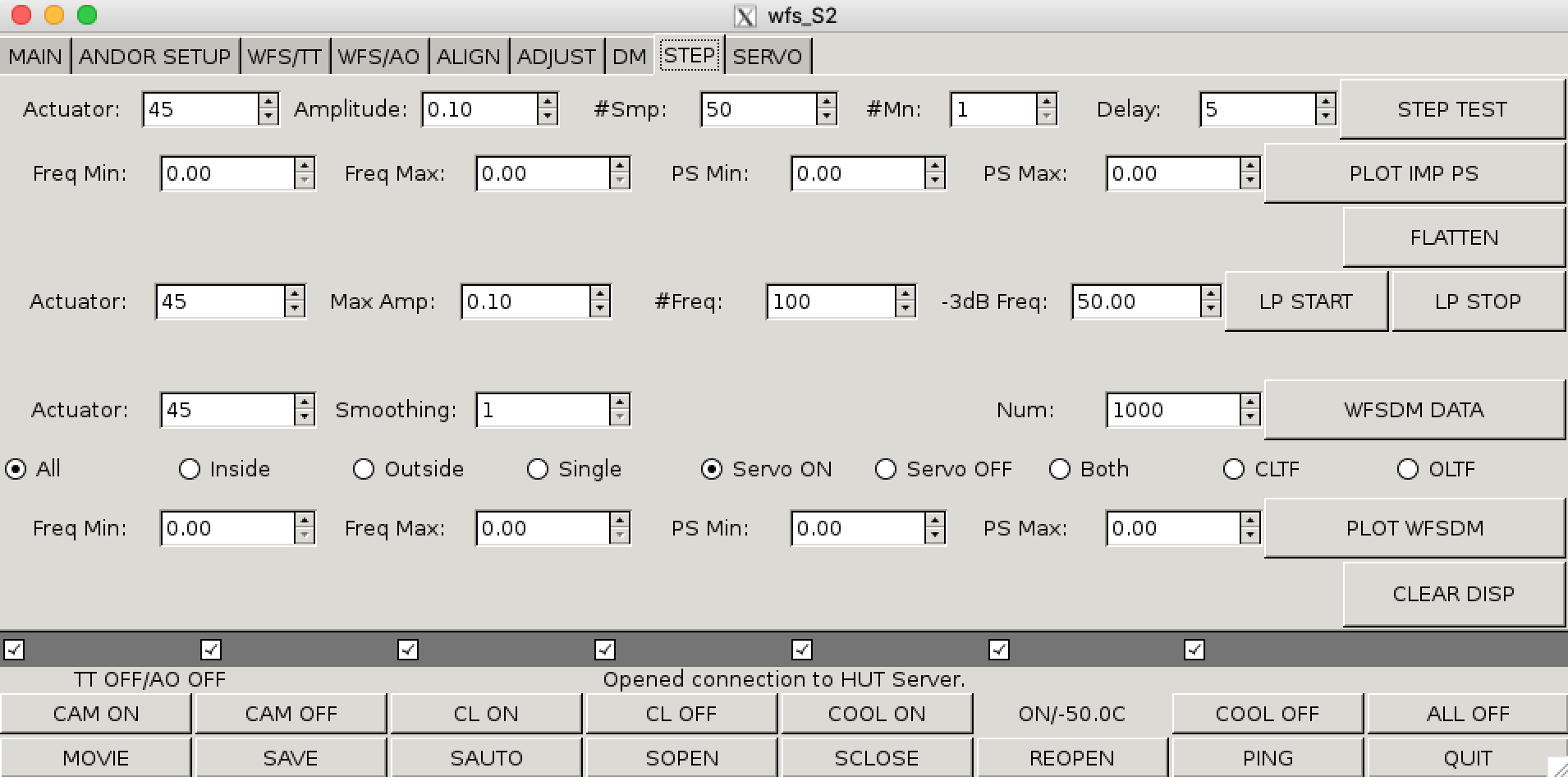Tuning the AO Systems
The servo is a fairly standard PID and the tuning is controlled in the WFS/AO panel. The relevant inputs are:
- Max DM Sum: For the integration part of the loop you can set a maximum for the sum over the history, that is a maximum of the integration part.
- Memory: The DM commands have a leaky memory, that is without any new input from the servo the DM will eventually relax back to the default flat. If you set this to 1.0 the loop will act like a standard PID control.
- Gain/Damping/Int: The standard PID terms.
- You need to click on SEND PARAMS to change the values in the servo.
The diagnostics are in the STEP panel and there are several actions you can take:
- The first is a step function test. In this you can offset a single actuator by a known amount. You will get the number of samples you ask for and the step will happen after a delay of a set number of samples. You can also ask for it to repeat this measurement several times and the result will be the mean of those. You will get a plot of the resulting motion of that actuator. The next row allows you to plot the power spectrum of that motion. The result you get is data from the WFS after passing through the reconstructor for the actuator in question.
- The second will create a random set of positions with a given power spectrum for a specified actuator. You can set the maximum frequency and the -3dB point for the power spectrum. You can also set the number of frequencies used to create the rando series.
- The final panel allows you to collect WFS data. These data are converted to actuator space using the current reconstructor before saving. You can set an amount of smoothing and how many samples you wish to collect. If you collect two sets, one with the servo on and one with the servo off, you can then plot the power spectrum of the mean of all actuators, the mean of the outside edge or center actuators, or a single actuator. This can be be power spectrum of the actuator motion with the servo on, the servo off, both at once or the closed loop performance or open loop performance of the servo.
Telemetry data can be saved from the wfsgtk (command, example, wfsgtk S1). The telemetry data saves all the relevant information to see how the AO closed loop performance is.
The telemetry data are saved in /ctrscrut/chara/data/, an example file is 2021_06_09_wfs_S2_telemetry_003.fits.
All the previous archived telemetry data can be found in /ctrscrut/archive/on_sky/moved_to_archive.
References for CHARA AO:
https://doi.org/10.1117/12.2056662
https://doi.org/10.1117/12.927031
